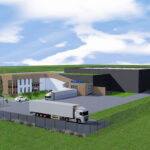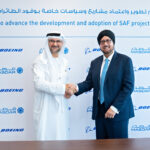Joby Aviation has begun its pilot-on-board flight testing in a step on the company’s journey towards commercial operations.
Four members of Joby’s flight test team have now piloted flights on board the company’s pre-production prototype aircraft, completing a series of initial tests that included free thrustborne hovers and forward transitions to semi-thrustborne flight.
The testing took place at the company’s facility in California. It adds to ongoing flight testing at Edwards Air Force Base which was announced in September, where both Joby and US Air Force pilots will demonstrate the aircraft’s capabilities.
Pilot testing
The pilot testing is being led by Joby chief test pilot, James Denham, and was designed to gather data on the aircraft’s handling qualities and pilot control interfaces.
“Having helped design and test flight controls for a wide variety of aircraft, including all three variants of the F-35 Joint Strike Fighter, nothing compares to the simplicity and grace of the Joby aircraft,” said Denham.
“After completing more than 400 vertical take-offs and landings from the ground, it is a privilege to sit in the cockpit of our aircraft and experience first-hand the ease and intuitive nature of the design that the Joby team has developed.”
To date, the majority of Joby’s flight testing has been using a remote pilot from a ground control station (GCS), using state-of-the-art communications technology and software.
This has allowed the company to generate a vast amount of data on the performance of the aircraft across a broad range of flight conditions.
During the testing, Joby pilots assessed the ease of conducting a number of tasks and maneuvers that pilots will be required to perform during normal operations, including vertical takeoffs, accelerating and transitioning to forward flight, runway centerline tracking, and decelerating to a vertical landing on a representative landing pad.
Subscribe to the FINN weekly newsletter
You may also be interested in:
GKN Aerospace and Joby Aviation enter contract for thermoplastic flight control surfaces

